AIYIMA A70 HiFi Stereo Speaker Amplifier – Explosive Box Of Power
AIYIMA A70 is a $189 USD stereo speaker amplifier with a huge amount of driving power, offering up to 300W x 2 for speakers, having both RCA and XLR inputs, a SNR of 116dB, and user-replaceable OP-AMPs. Today we will review the A70 and explore what setups can best take advantage of its design, and who it is made for.
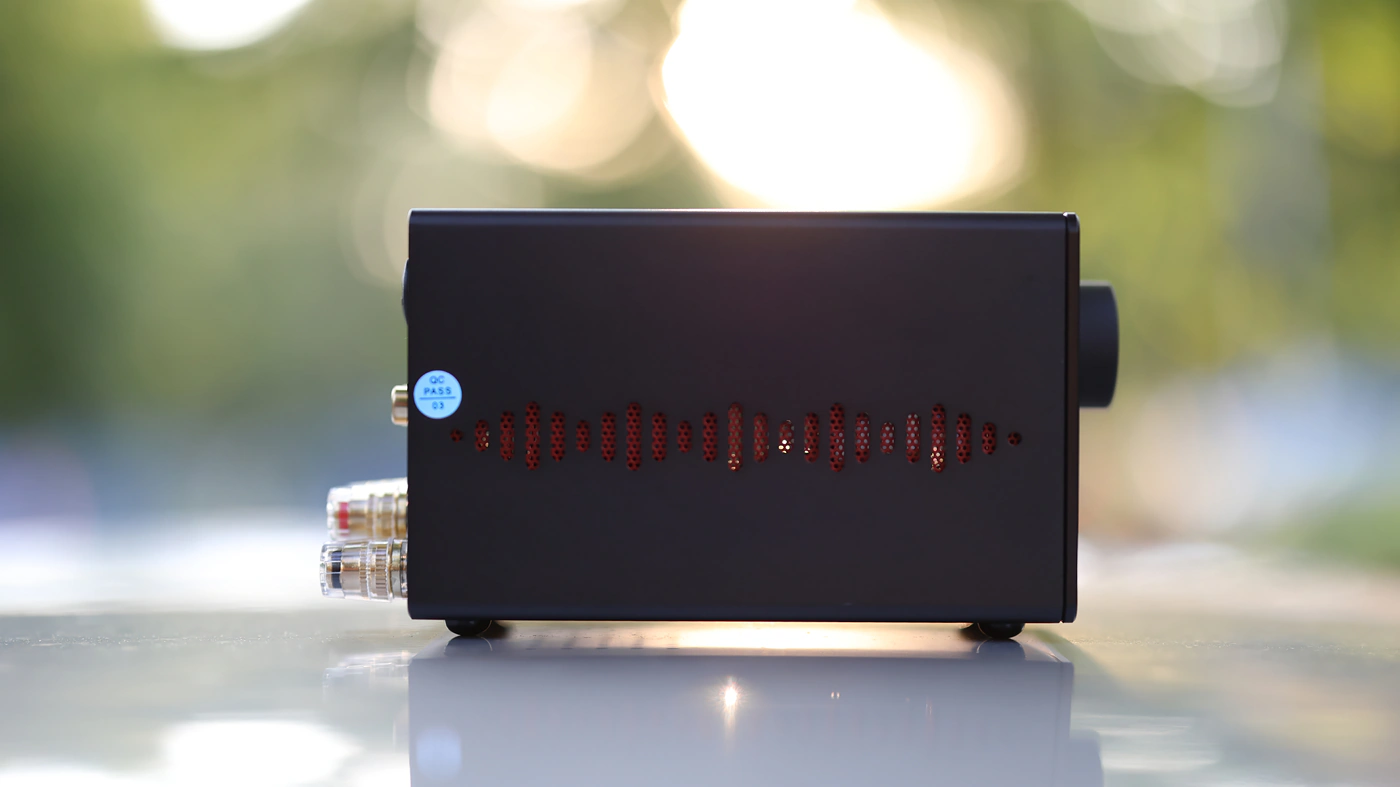
Introduction
AIYIMA is one of the few companies I simply don’t want to write the name of as having the IYI part is not natural for me as an English / Romanian speaker. With this out of the way, the company has a strong record, they always design and offer entry-level, reliable products with a high quality for the build and exceptional price / performance ratio. As some of us woauld prefer ordering from a more known shop, I am happy to note that AYIYMA products are available on Amazon, but also on their own web shop, Aliexpress and other outlets too. As an Amazon Influencer, I earn from qualifying purchases, and using the purchase links in my reviews helps me maintain this website and Youtube Channel. Huge thanks to AIYIMA for providing us with the sample for this review.
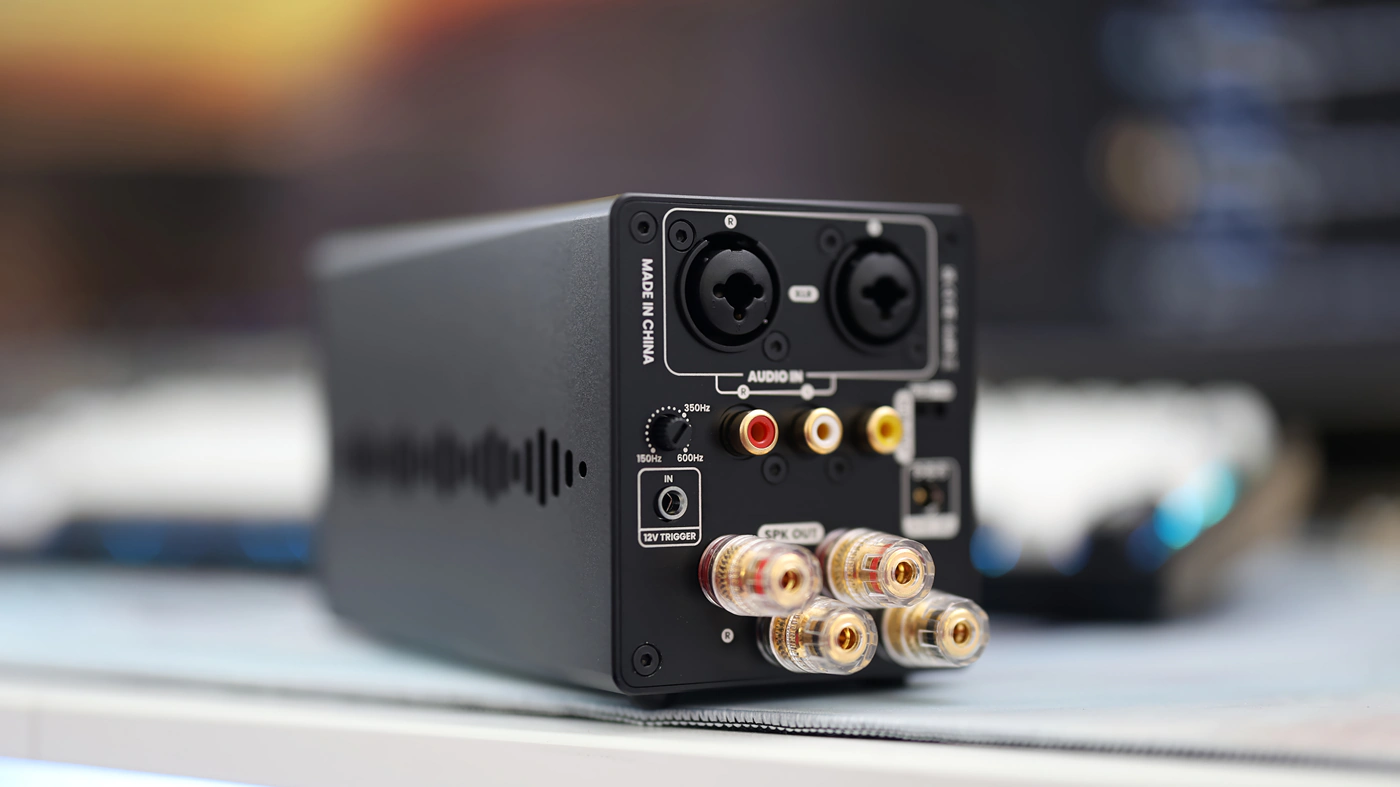
PROs – Smooth and romantic sound with a modest amount of details but a wide soundstage, and fairly good instrument separation. Resolution is great for the money and volume control sure is a plus, while the presentation is smooth and laid back, relaxed, with enough driving power for most speakers out there. The subwoofer output is a big plus.
Cons – It expects a signal lower in voltage than the standard, so it needs a DAC with volume control or gain control to sound good and distortion free. Very little volume control, gets loud extremely quickly so it really needs the DAC to have volume control.
Product Link
Amazon – https://amzn.to/3XLKzyh
Aliexpress – https://s.click.aliexpress.com/e/_DeMzwIz
Build Quality/Aesthetics
AIYIMA A70 is the kind of power amplifier that puts function before aesthetics, so it ends up being a square tall box of electronics that runs fairly hot and has a single volume wheel at the front as the main way to control it, with a selection of two inputs, one output, and a power converter to power it.
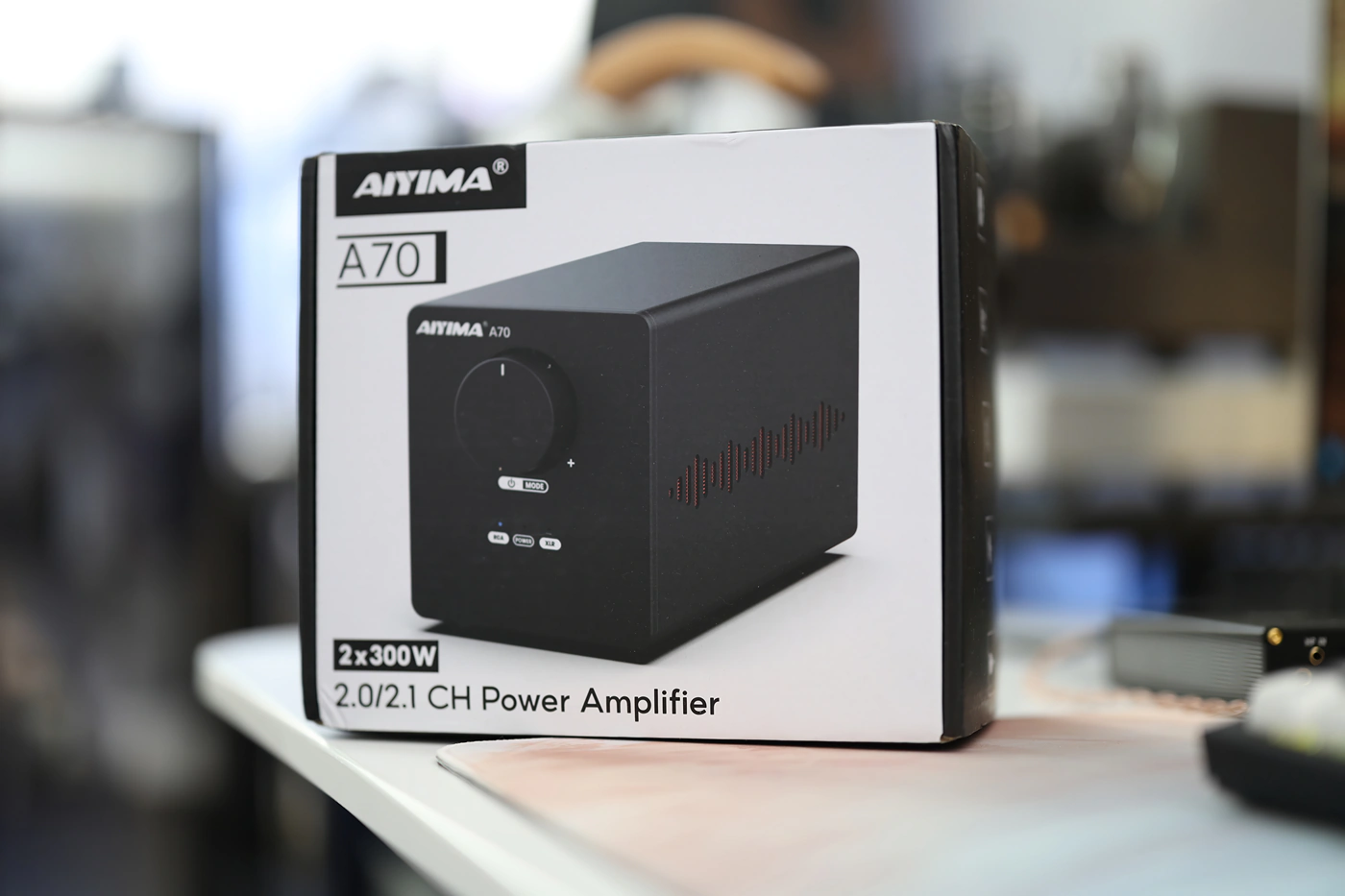
Starting with the power input, you can order the A70 with a multitude of power blocks, including ones for multiple zones, but also in multiple powers. The one we are exploring today is the base version for Europe, having a 220V input to 48V 5A output. There is a version with 10A for output available, but I would not really recommend it as A70 is already running rather hot to the touch with this lower power version.
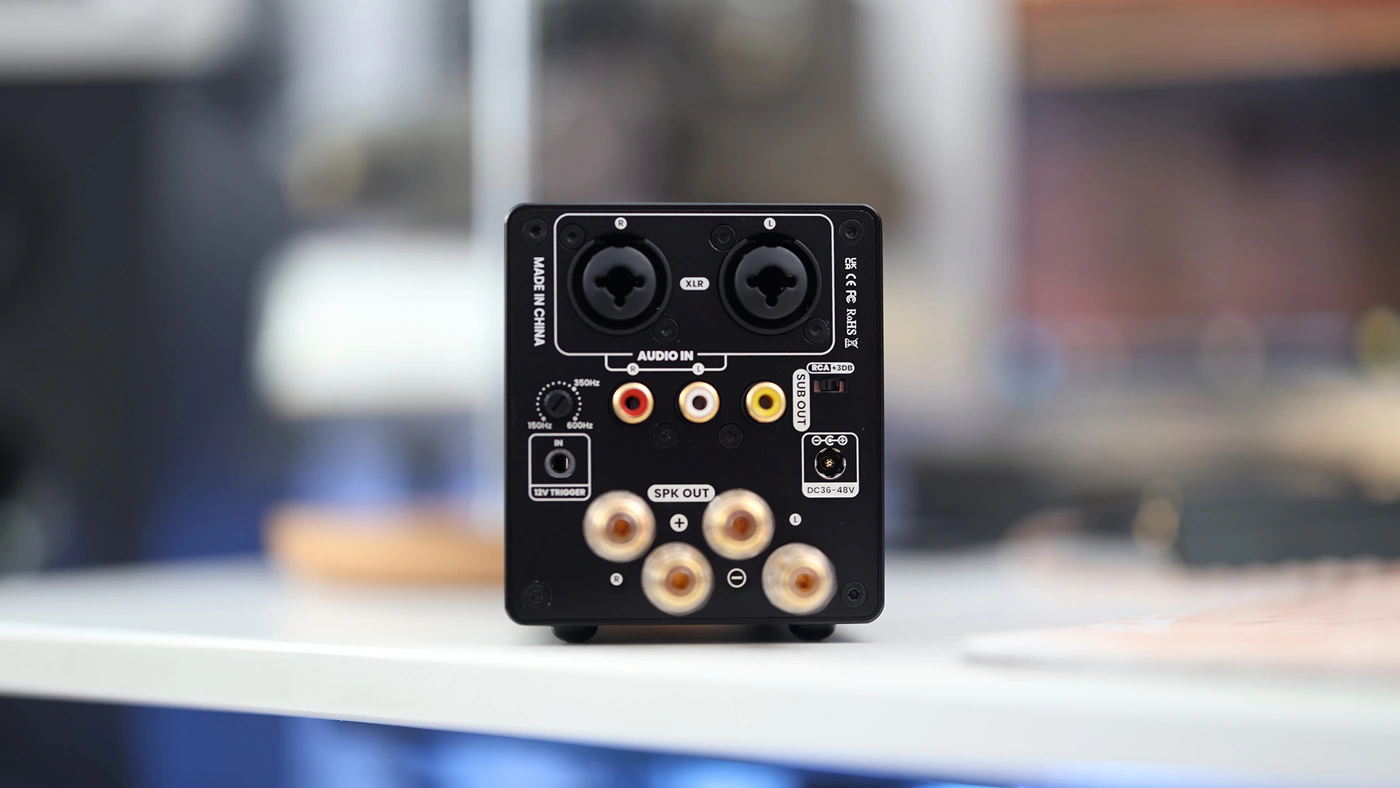
Digging deeper into the unit, we have a strong chipset based on the TPA 3255 and NE 5532, with replaceable operational amplifiers in the standard socketed format. The maximum distortion of the unit is 0.0015% at 1W which is for a low volume, and the frequency response goes from 20 Hz to 20 kHz with a maximum deviation of 1 dB. The XLR input has a sensitivity of 3.8Vrms, which means that most DACs that have a 4 Vrms output for the DAC output will produce distortions. For this reason alone, I had a much better experience using DACs with volume control with the A70, the list including SMSL DO200 PRO and Aune S9C PRO. Same goes for the RCA input which expects a signal of 1.9Vrms or 1.1Vrms, both of which are lower than the standard of 2Vrms most DACs will output.
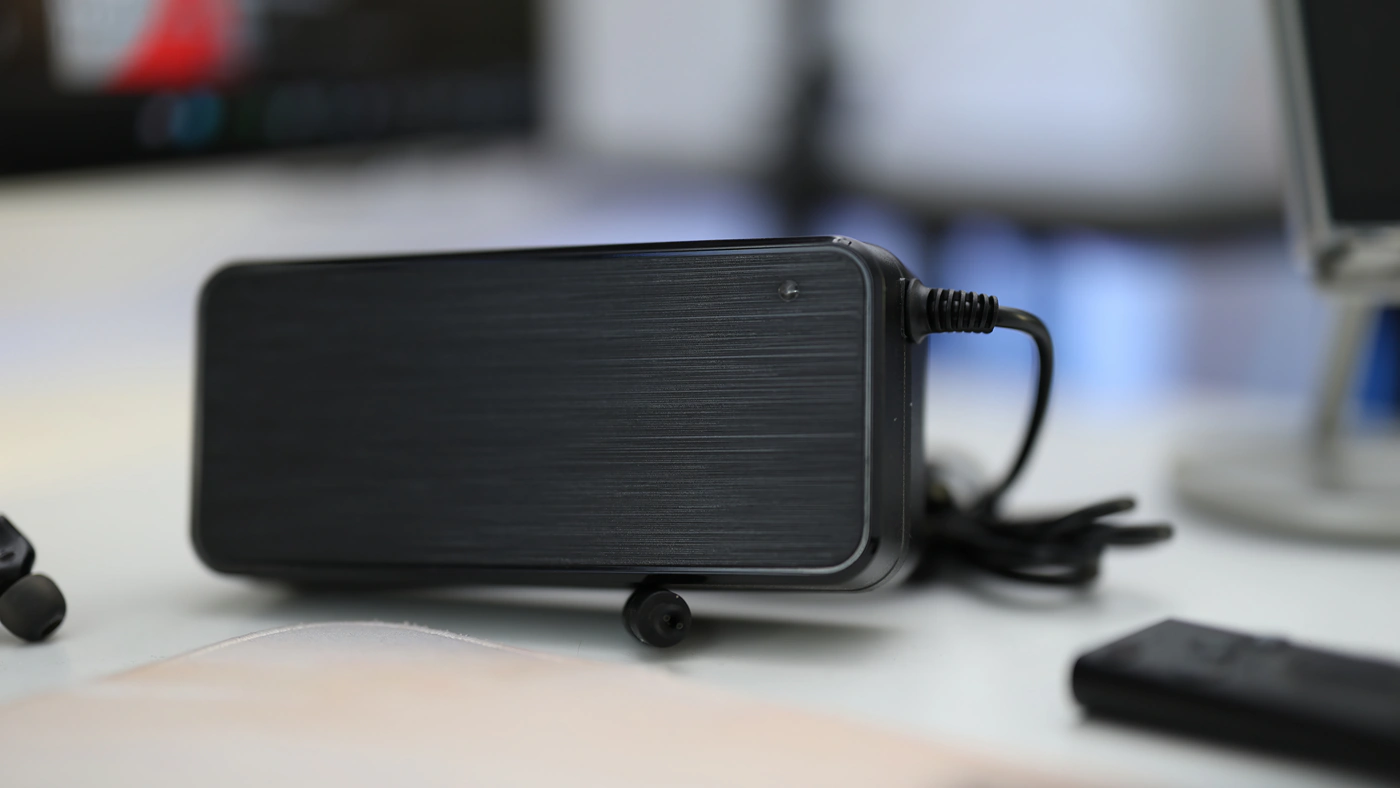
You can drive speakers with an impedance up to 8 OHMs and as low as 4 OHMs, so using the Aperion RST Super Tweeters for a pair of speakers is not recommended as it can lower the impedance too much and run A70 into a short circuit. You can use a subwoofer, and A70 has a separate active subwoofer output in the shape of an RCA connector, and it also has a manual crossover setting, which goes between 150 Hz and 600 Hz. There is a 12V Trigger input, so that a70 starts together with your DAC, and we also have a maximum stereo output of 2 x 300W if you are using the larger 48V 10A power block.
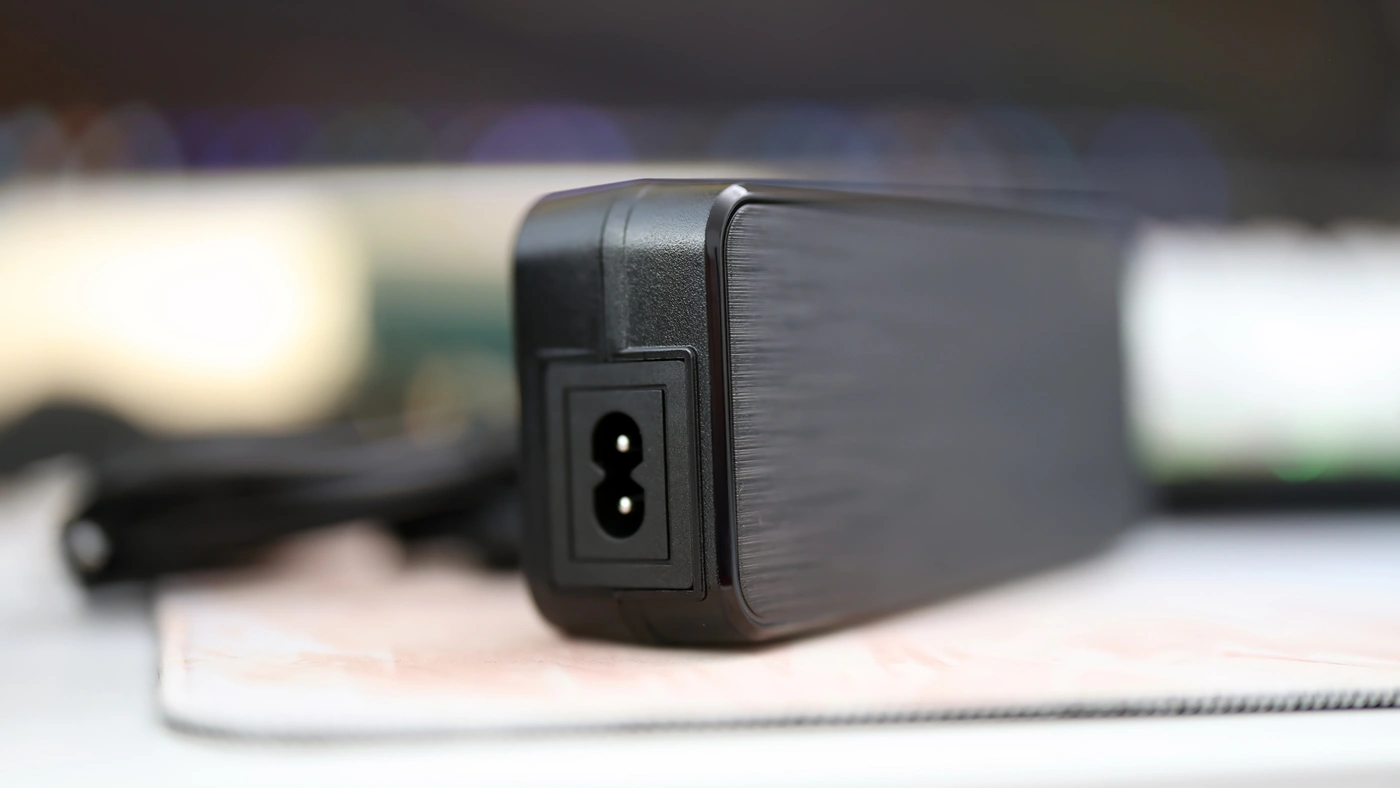
Something that is made more clear by reading into the specification sheet offered by AIYIMA on their website is that the frequency response of 20 Hz to 20 kHz is given for a 5W output, and if you go for a higher wattage, you may run into a higher deviation from those numbers. Also, the unit has a much lower power with other power bricks, and if you want to use the full 300W of power, the THD is an extreme 10% THD+N, which is one of the highest I’ve seen on an amplifier to date. The measurements are not misleading in any way though, and most people will hear the sound at a THD of around 1%, as it grows with higher volumes.
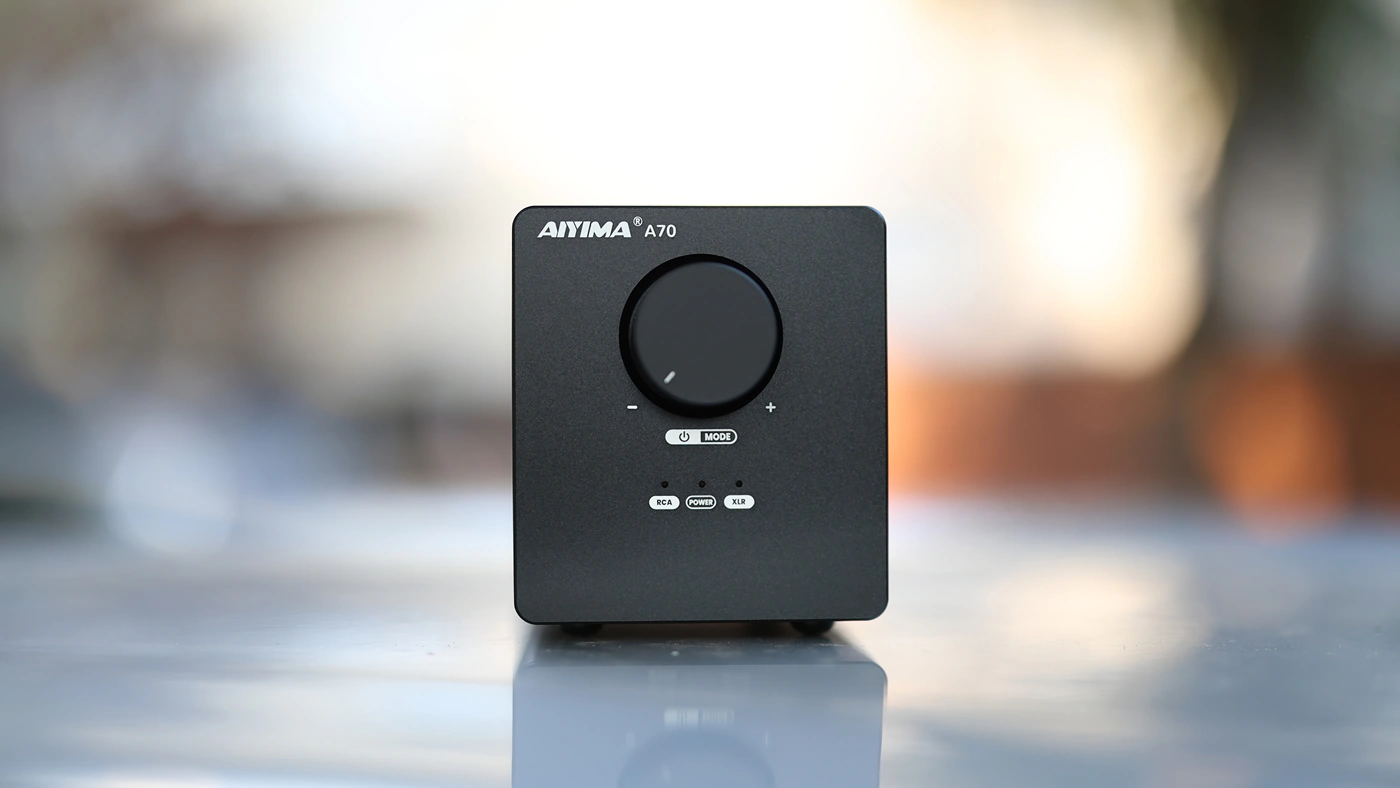
Subjectively, A70 is a much heavier unit than it looks, it has excellent build quality, and the volume wheel at the front is convenient although a remote would have been sweet. We have a low background noise level, with most speakers there is no buzzing, background noise or anything that would distract you from music. The only downside is that you need a DAC with variable volume, and the volume saturation gradient is set too loud, basically even with large tower speakers, and even with hard to drive 8 OHM speakers, you can barely touch the volume wheel on A70 and it gets insanely loud quickly. It also gets really hot during usage regardless of the volume you’re listening at, so you will likely have to allow it to cool off if you want to use it for a party at max volume. The title of the review refers to how the sound gets explosively loud, as the unit never exploded or burned up.
Sound Quality
Pairings – To really explore the sound of the AIYIMA A70 Speaker Amplifier I have used a few DACs, including ones with volume control and ones without volume control, including SMSL DO200 PRO, Musician Pegasus II R2R DAC, Topping D50 III DAC, Burson PlayMate 2, and HIFIMAN Goldenwave Serenade. A70 works best with DACs that do have volume control, and with DACs that have no self noise. As A70 has no self noise, if the DAC is silent, you will not hear noise, and A70 is not very sensitive to DAC noise, like Keces S300+, so you are not likely to ever hear background noise while using A70. On the Speaker part, I have paired the A70 with both bookshelf speakers including NHT C3 and Buchardt S400, but also with my current floorstanding speakers, the Pylon Audio Diamond 30 MKII Speakers. A70 has plenty of power for all of them, and is generally one of the most powerful, punchiest sounding speaker amplifiers you can grab while on a budget, with enough to drive anything. I have not tested the subwoofer output as I am currently waiting for a few subwoofers to arrive.
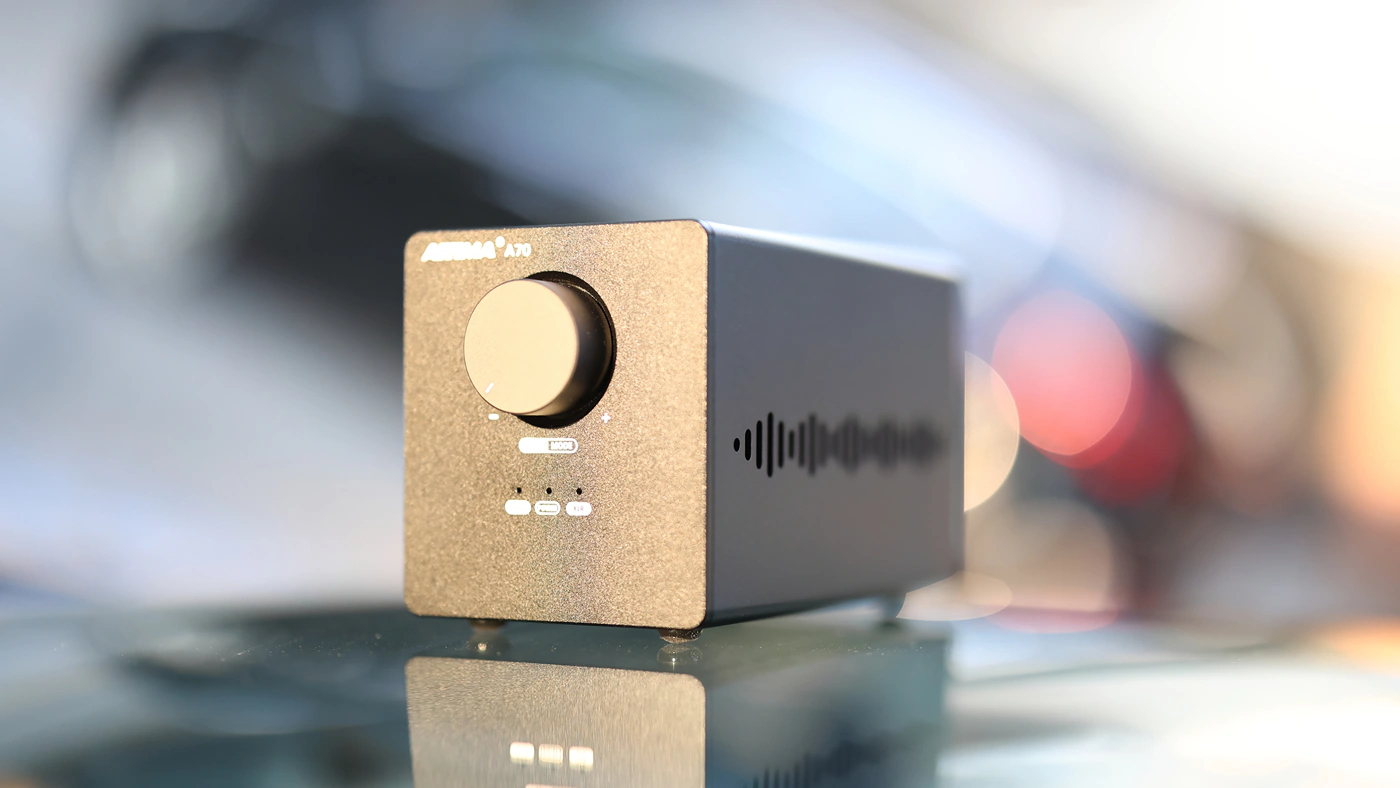
Overall Signature – The sound of the A70 is clean, crisp and has a fairly controlled sound, with a slightly emphasized lower midrange, and smoother, softer treble. The bass roll-off with most speakers sits more at the level of where the speakers roll-off and the amplifier does not have a roll-off, although it does have a slightly soft treble impact, which can create the feeling of high-end roll-off. Detail is fairly good, while dynamics are also natural, without a strong dynamic compression. Although not much information is given about A70 and its class, it gets overly warm and downright hot, so while popular wisdom would dictate Class D considering the price point and the size, I would throw in Class AB as a possibility.
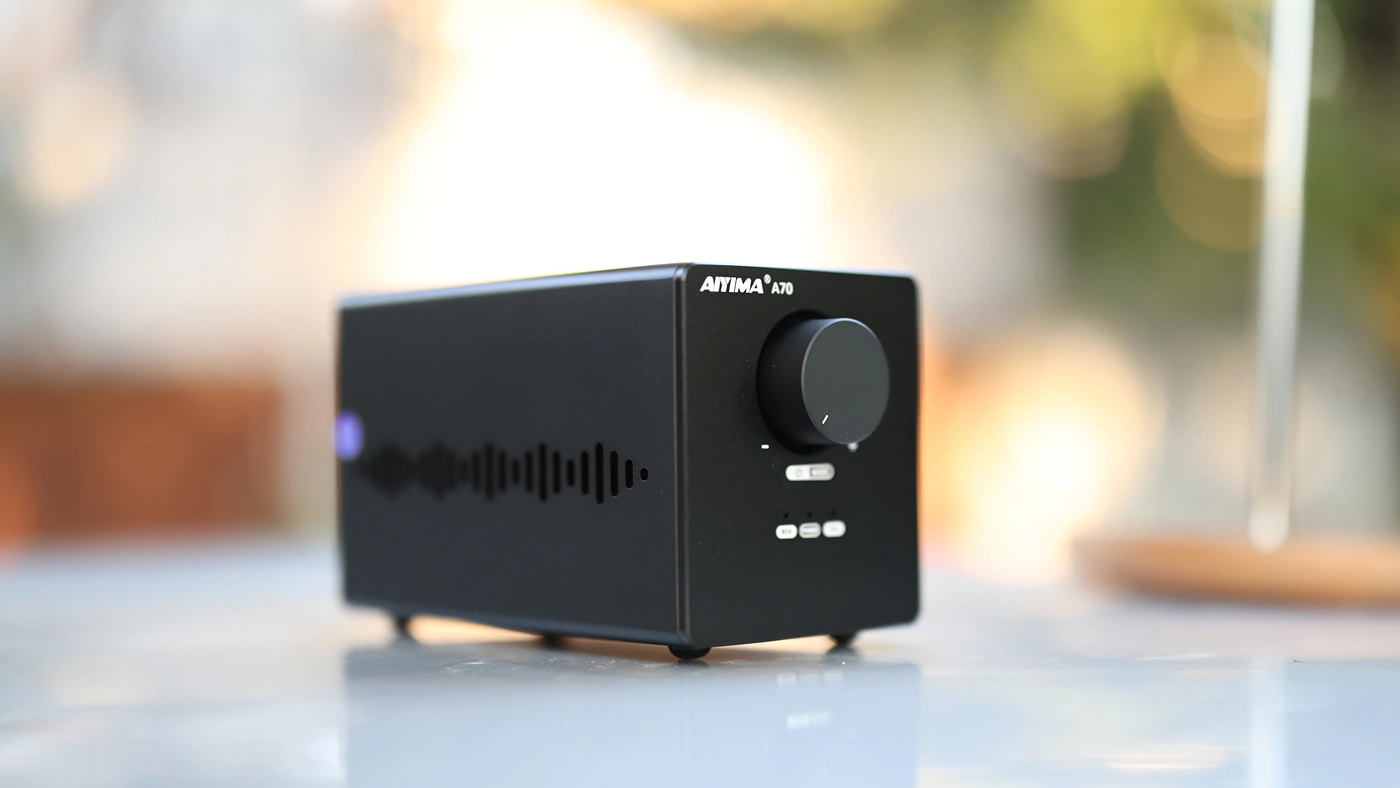
Bass – Starting with a slow and full low-end, A70 gives music a fair amount of warmth, depth and slows down the textures in the bass, creating what I consider to be a romantic and fuzzy experience. Depth is more than enough, but not evident, as most of the low-end energy is focused around 50 hz – 60Hz. Naturally, this is a limitation of most of the speakers you’re going to drive using A70, so a subwoofer is needed for a proper 20 Hz extension.
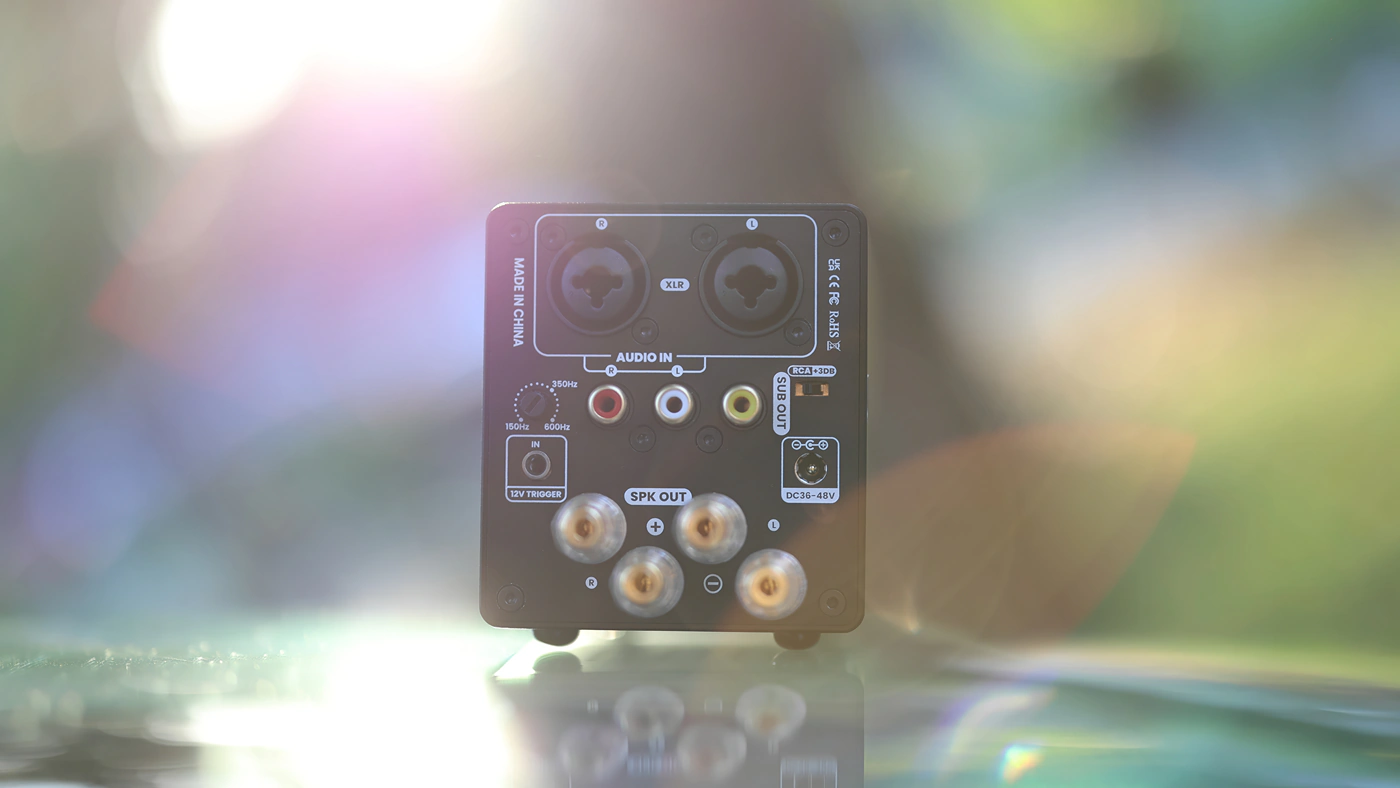
Midrange – If you like a smoothe, fuller and relaxed midrange, you will enjoy the A70 and the way it paints a laid back, slightly distant midrange. This creates the feeling of space and separation well, although the sound has a modest amount of details, it is engaging, colorful and musical, once again fairly romantic and fuzzy. The impulse response is slow, so most textures sound sluggish, with little edge and crispness, but it is warm and musical.
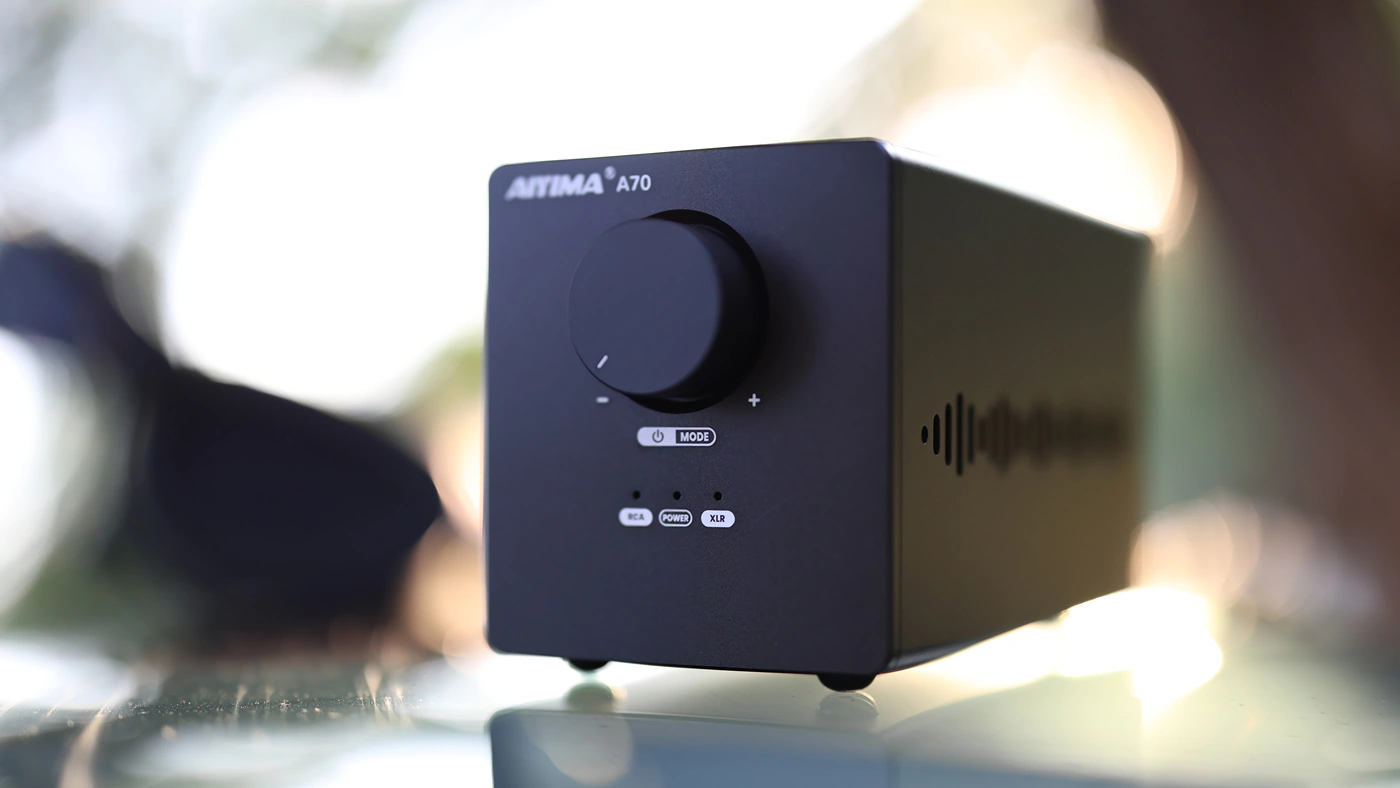
Treble – The top end compliments the rest of the sound by continuing the trend, allowing the sound to be laid back, relaxed and smooth. If you’re easily fatigue, you will like the treble of A70, and it pairs really well with bright and sharp sounding speakers, as it keeps them under control, but I would not recommend it to be paired with laid back and relaxed sounding speakers or DAC, as the sound can become too vague and too modest in resolution / details.
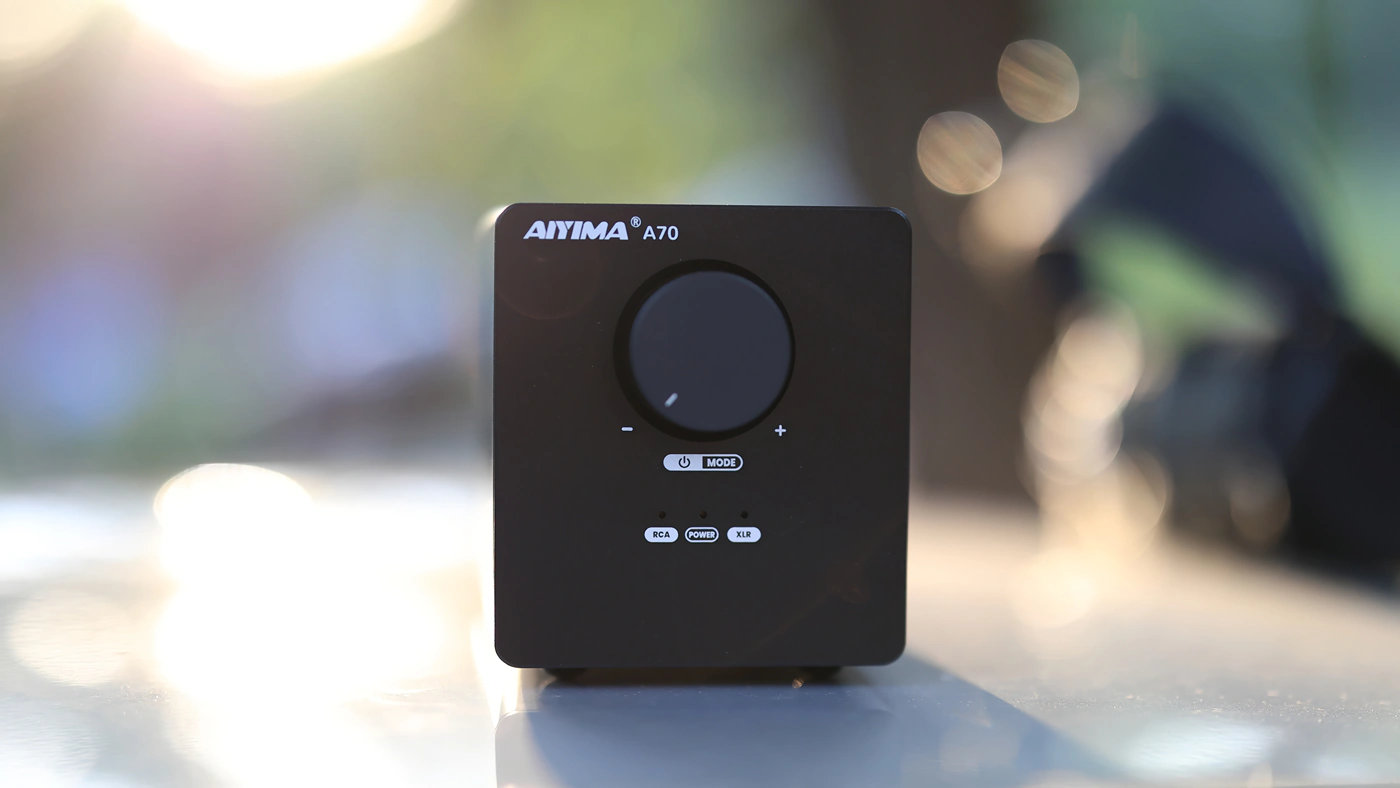
Volume Control – There is volume control on the A70, but it is average in the volume control. The volume control allows for a very modest control of the volume, and if the DAC does not have variable volume, sound will either always be too quiet or too loud. The tuning / signature is stable across multiple volume levels and the noise floor is not apparent at maximum volume either.
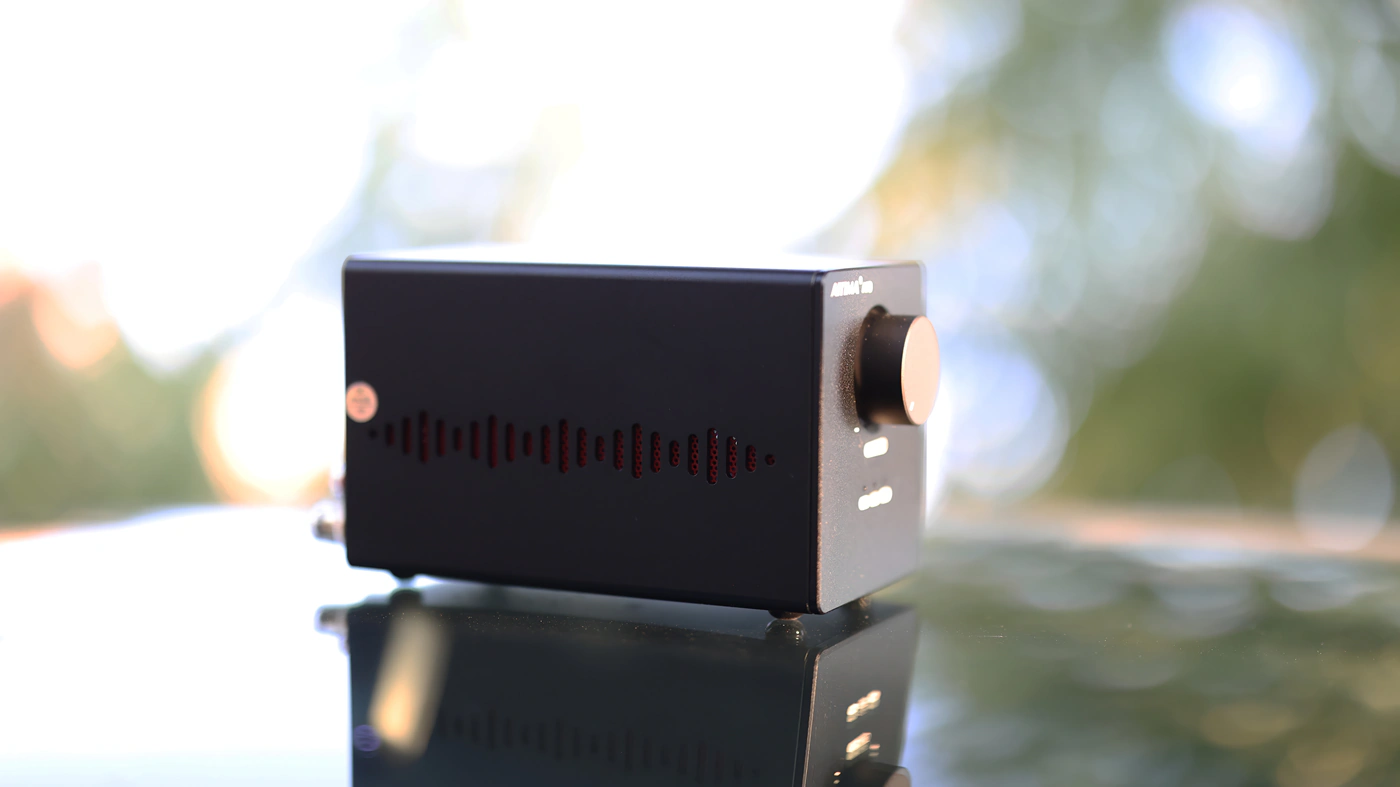
Dynamics / PRaT / Textures – Textures are always slow, smooth and relaxed, and A70 does not show brightness or sharpness in music at all.
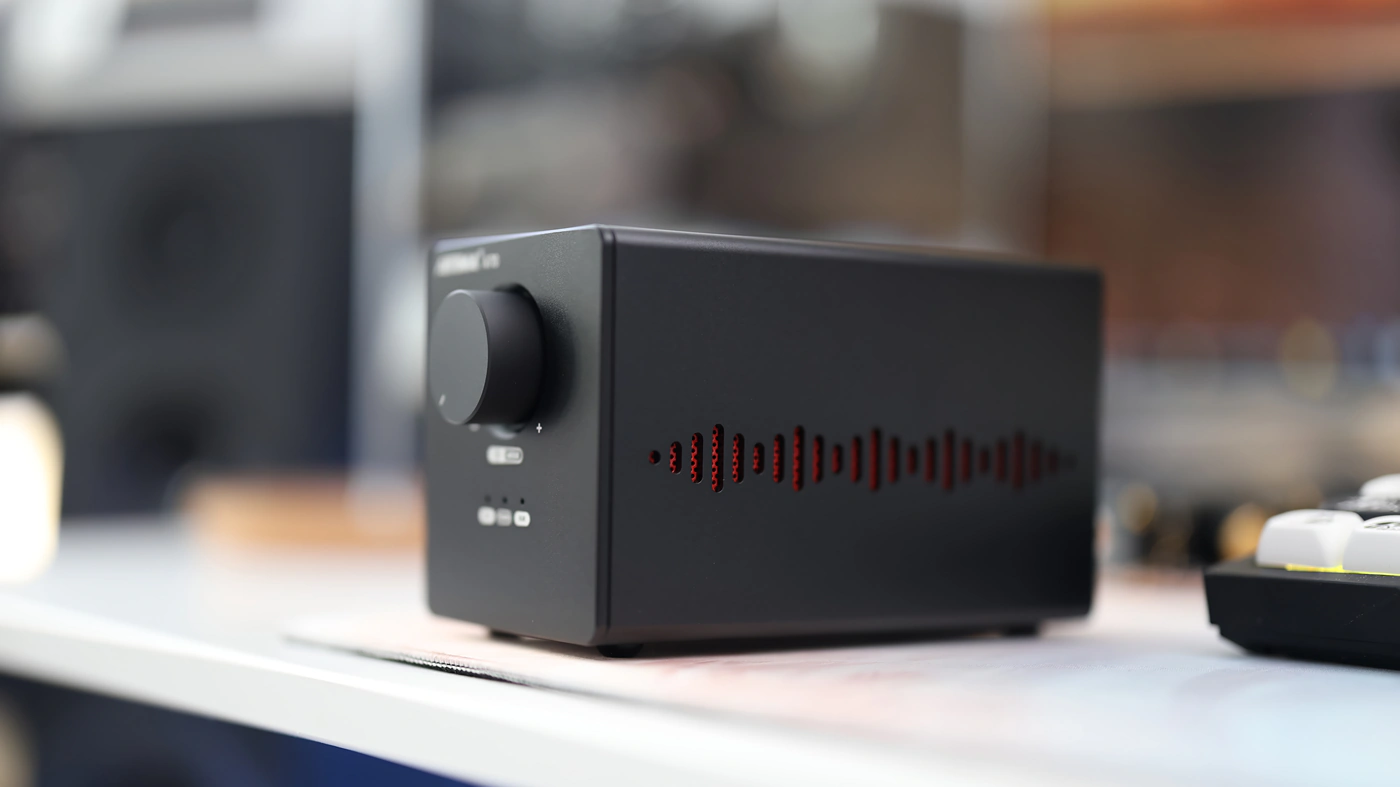
Soundstage – While the sound doesn’t really sound focused, it is wide and holographic at all times. This is compounded by the fact the sound is always a bit distant, in the end the tuning comes through as spacey and wide. Instrument separation is not a strong point, and instruments are blended nicely together, with most of the presentation having a strong imaging though.
Value and Conclusion
Before the end of the review, I have to admit that while I have been spoiled by daily listening to far better amplifiers, I can accept that AIYIMA A70 has an excellent price / performance ratio, it costs very little but offers a clean sound without background noise, and fairly good dynamics, for a very affordable price.
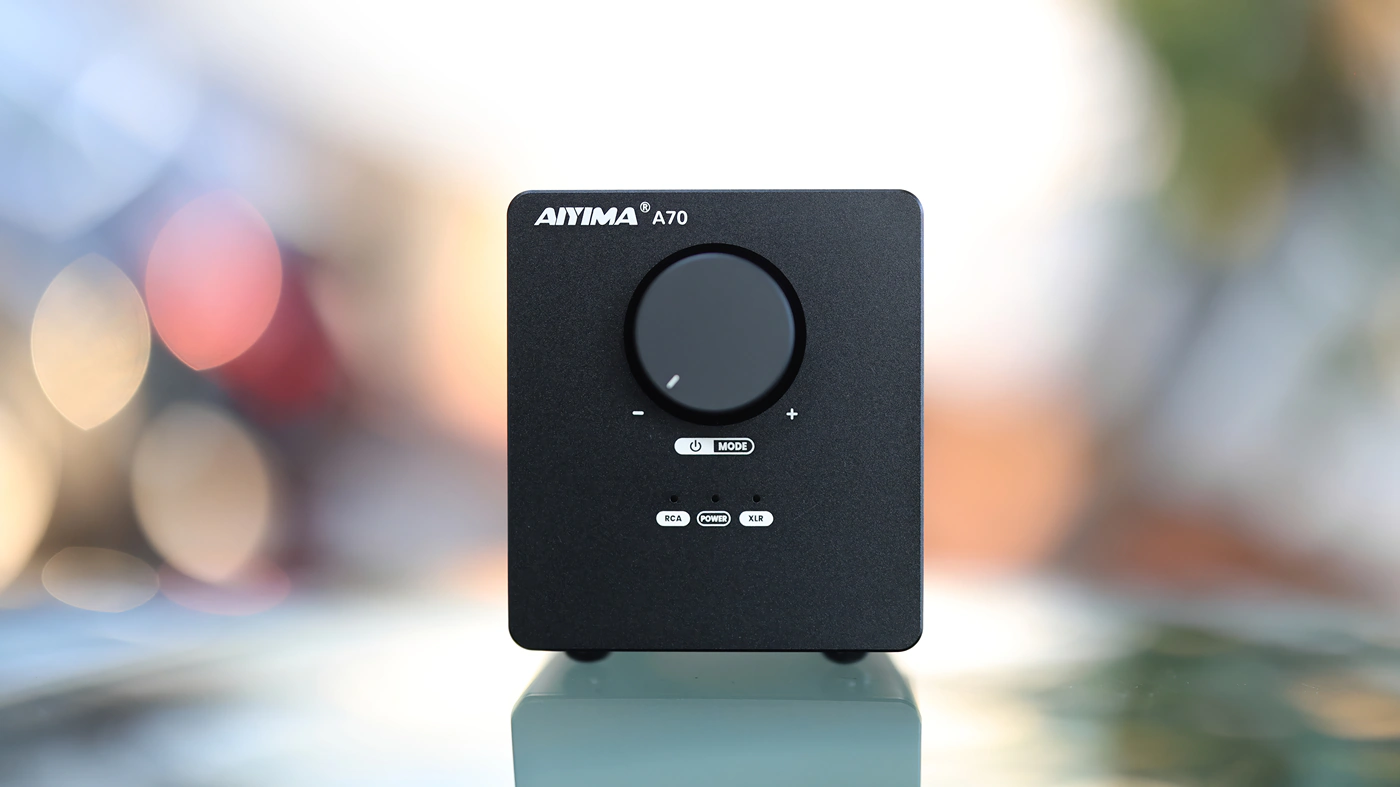
At the end of the day, A70 offers what most amplifiers fail to offer around the price point, which is a clean and clear sound with no noise, but a wide and smooth, laid-back and relaxed tuning.
Product Link
Amazon – https://amzn.to/3XLKzyh
Aliexpress – https://s.click.aliexpress.com/e/_DeMzwIz
--- Please remember to stay safe, and always have fun while listening to music!---
- If you have a dime to spare, please donate, and help us! It would make the day brighter for me and my wife-
Full Playlist used for this review
We listened to more songs than those named in this playlist, but those are excellent for identifying a sonic signature. I recommend trying most of the songs from this playlist, especially if you’re searching for new music! The playlists are different for Spotify, Tidal and Youtube, and based on the songs I enjoy and are available on each!
https://www.youtube.com/playlist?list=PL_cjBXGmwSHSdGcwuc_bKbBDGHL4QvYBu
https://open.spotify.com/playlist/5J3oloz8Riy9LxEGenOjQ0?si=979ba4f082414be7
https://tidal.com/browse/playlist/330fd544-8e5b-4839-bd35-676b2edbb3d5
--- Contact Us ---





